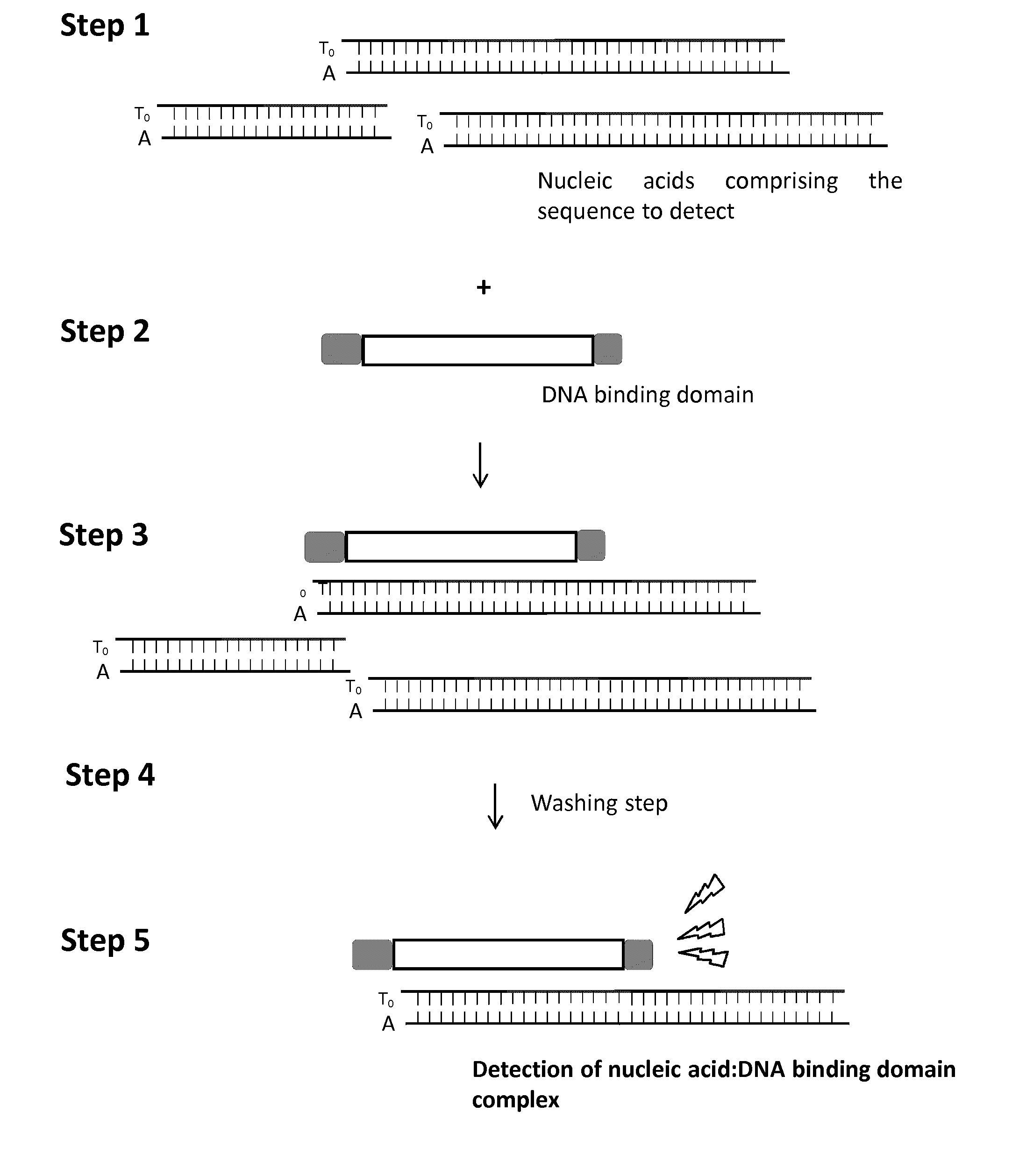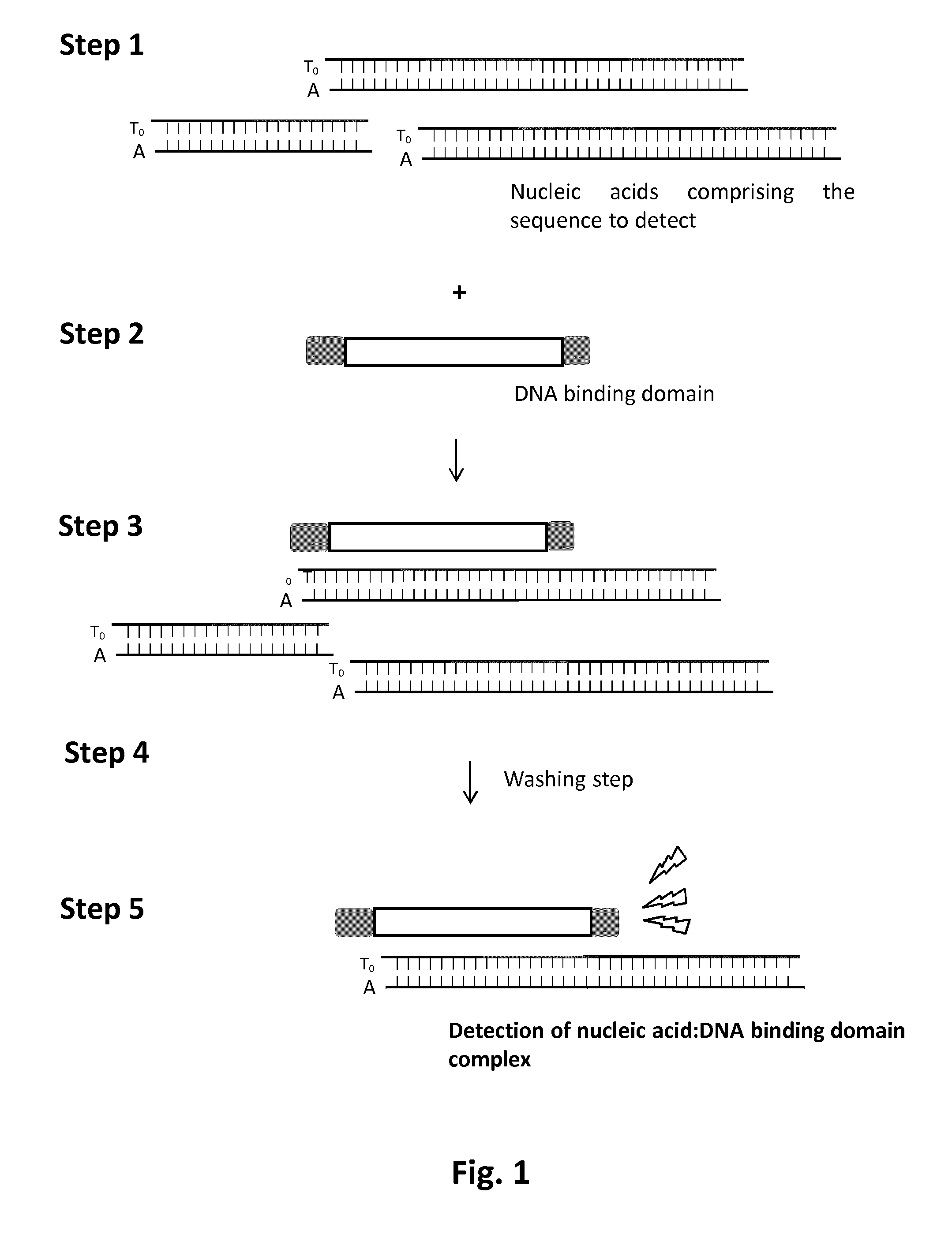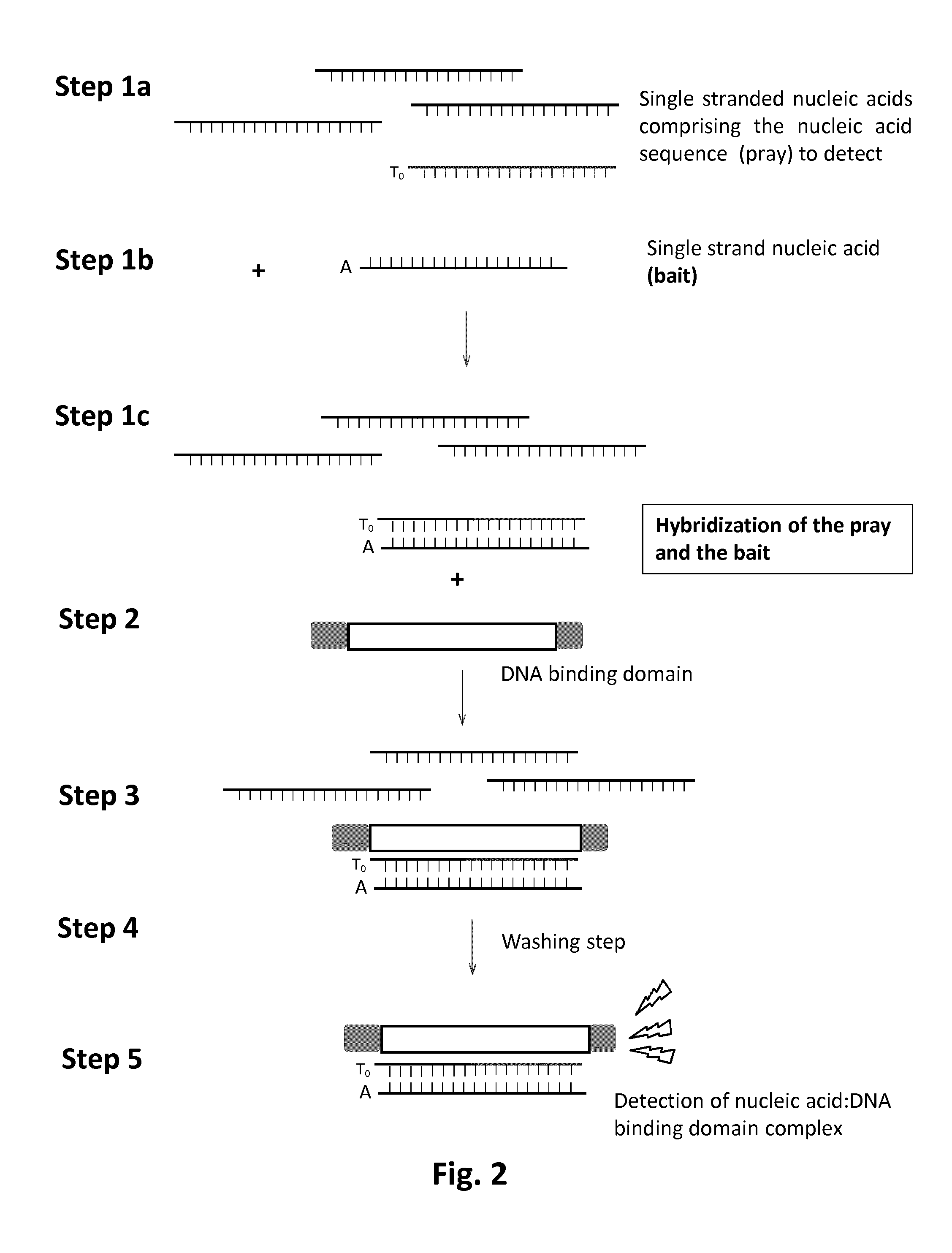Methods and kits for detecting nucleic acid sequences of interest using dna-binding protein domain
a technology of dna-binding protein and nucleic acid sequence, which is applied in the field of methods and kits for detecting nucleic acid sequences of interest using dna-binding protein domain, can solve the problems of increasing the probability of errors, time-consuming amplification of target sequences, and all the methods developed so far suffer from serious drawbacks, and achieves rapid diagnostic
- Summary
- Abstract
- Description
- Claims
- Application Information
AI Technical Summary
Benefits of technology
Problems solved by technology
Method used
Image
Examples
example 1
Detection of Double Strand and Single Strand DNA Using TALE RAGT2-Renila Detector System
Principle
[0088]The detection method consists in using a TALE DNA binding domain fused to a Renila Luciferase to detect a single strand DNA (ssDNA) sequence of interest via luminescence emission. It relies on strepavidin coated magnetic beads, a biotinylated ssDNA “bait”, complementary to the sequence “pray” to detect and a TALE-Luciferase detector protein (TALE-LUC) specific for the double strand DNA (dsDNA) pray:bait complex (FIG. 13).
[0089]The first step of this method consists in anchoring the ssDNA bait onto the streptavidin coated magnetic beads (FIG. 14A). This anchoring step is followed by multiple washing steps to remove unattached ssDNA bait. The pool of ssDNA containing the ssDNA pray to detect is then added to magnetic beads (FIG. 14B, step2). In optimized temperature, buffer and salt conditions, the ssDNA pray is expect to anneal with the ssDNA bait in a highly specific manner. This a...
example 2
Detection of Single Strand RNA (ssRNA) Using TALE RAGT2-Renila Detector System
Principle
[0100]The principle of ssRNA pray detection is based on the method delineated above to detect ssRNA pray. It includes all the steps (1-4) described above. However, instead of using a biotinylated DNA bait corresponding to the reversed and complementary sequence of TALE RAGT2 target (SEQ ID NO 4), the biotinylated DNA bait used in the method described herein, corresponds to the actual TALE RAGT2 target (SEQ ID NO 21, FIG. 23). Such bait molecule is designed to specifically anneal to the the ssRNA pray to detect (SEQ ID NO 23). Once formed, the DNA / RNA heteroduplex could be potentially recognized by TALE RAGT2-Renila and eventually detected via a luminescence.
—Experimental Proof of Concept and Specificity Assessment
[0101]According to the protocol described for the detection of ssRNA pray, ssRNA pray (SEQ ID NO 23, 10 pmol) was incubated with ssRNA biotinylated bait (SEQ ID NO 21) already immobilized...
PUM
| Property | Measurement | Unit |
|---|---|---|
| Fluorescence | aaaaa | aaaaa |
| Chemiluminescence | aaaaa | aaaaa |
Abstract
Description
Claims
Application Information
 Login to View More
Login to View More - R&D
- Intellectual Property
- Life Sciences
- Materials
- Tech Scout
- Unparalleled Data Quality
- Higher Quality Content
- 60% Fewer Hallucinations
Browse by: Latest US Patents, China's latest patents, Technical Efficacy Thesaurus, Application Domain, Technology Topic, Popular Technical Reports.
© 2025 PatSnap. All rights reserved.Legal|Privacy policy|Modern Slavery Act Transparency Statement|Sitemap|About US| Contact US: help@patsnap.com



